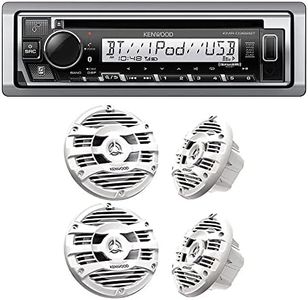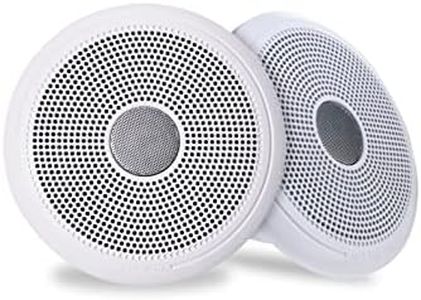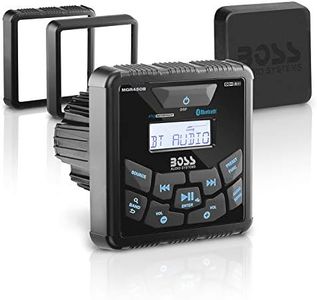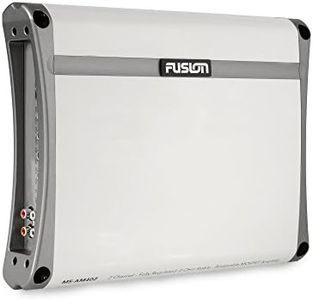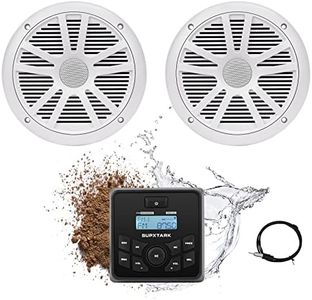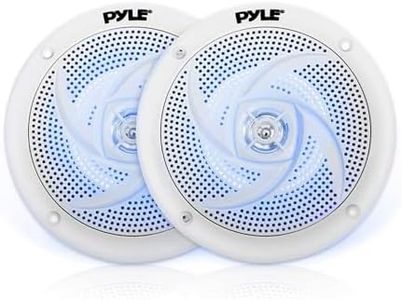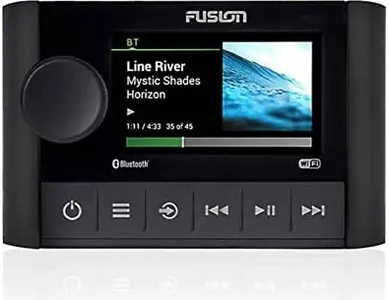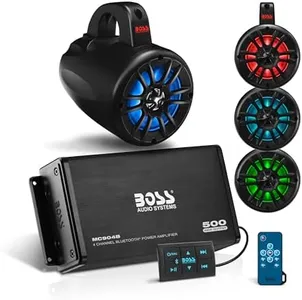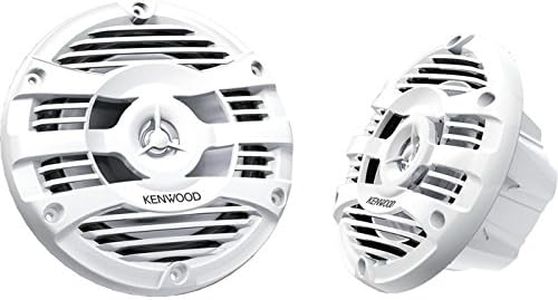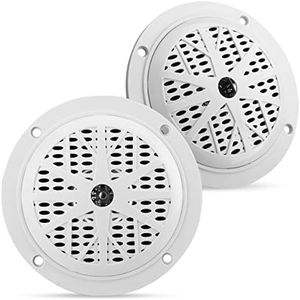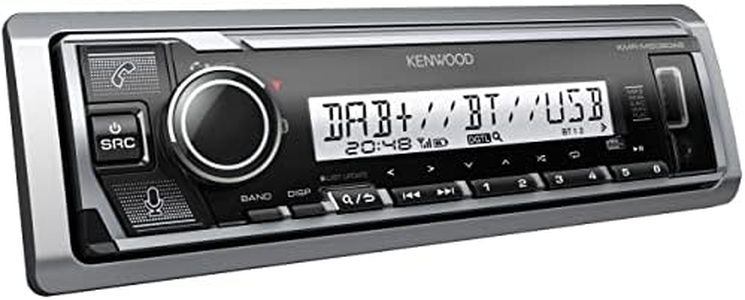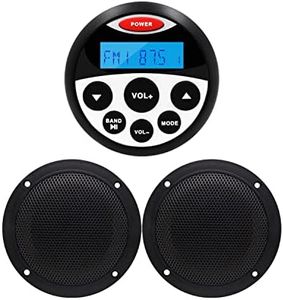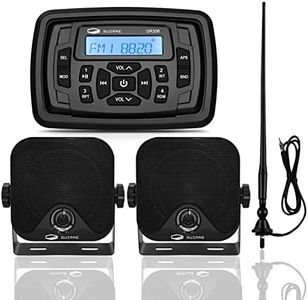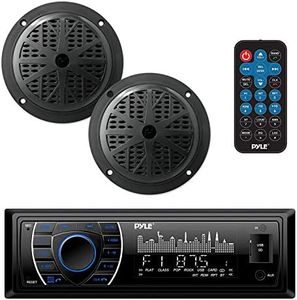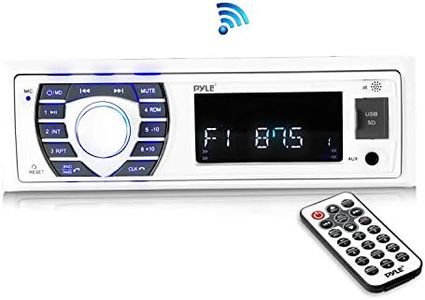We Use CookiesWe use cookies to enhance the security, performance,
functionality and for analytical and promotional activities. By continuing to browse this site you
are agreeing to our privacy policy
10 Best Marine Stereo Packages
From leading brands and best sellers available on the web.Buying Guide for the Best Marine Stereo Packages
When choosing a marine stereo package, it's crucial to remember that these products are specifically designed to withstand harsh marine environments, such as exposure to water, salt, and sunlight. Unlike regular car or home stereos, durability and weather resistance matter as much as sound quality. You’ll want to find a system that offers the performance you're after while being reliable on your boat. Consider where you'll install the stereo, the type of audio experience you want, and any additional features that could enhance your time on the water.Water Resistance (IP Rating)Water resistance is critical for marine stereo packages. The IP (Ingress Protection) rating shows how well the system handles moisture and dust. For marine use, look for ratings of IPX5 or higher. IPX5 protects against water jets, IPX6 withstands powerful water jets, and IPX7 can handle submersion. The higher the number, the better the protection. If your stereo is exposed directly to spray or occasional splashes, aim for at least IPX6. For installations in covered areas, IPX5 may suffice. Always pick a rating based on how exposed your stereo will be on your boat.
Power OutputPower output determines how loud and clear your music will sound, especially in open or noisy environments like boats. It's usually measured in watts per channel. Lower power ratings (15-25W RMS per channel) are fine for background music on smaller boats or quiet areas. Mid-range (25-50W RMS) is suitable for average-sized boats and when you want decent volume without distortion. Higher power (over 50W RMS per channel) is ideal for larger vessels or if you like your music loud over engine noise or wind. Choose based on your typical listening volume and the size of your boat.
Speaker Quality and MaterialsMarine speakers are built with special materials to resist corrosion and damage from saltwater and UV rays. Good marine speakers use materials like polypropylene cones and rubber surrounds, which last longer in marine environments. Simpler, basic speakers may be adequate for basic listening but may not endure as well. Heavier-duty marine speakers provide clearer sound and will survive years of exposure. If you use your boat often or in saltwater, prioritize premium marine-grade materials for lasting performance.
Connectivity OptionsConnectivity options affect how you play music through your marine stereo. Common types include Bluetooth, USB, AUX inputs, and sometimes even wireless options like Wi-Fi. Bluetooth simplifies playing music from any smartphone; USB allows for charging and direct connection to devices; AUX is traditional but reliable. If you prefer streaming or use your phone a lot, prioritize Bluetooth. For more permanent connections, look for USB or AUX. Match your usual listening habits with the available connections on the system.
Expandability and IntegrationExpandability means how easily the stereo system can grow or work with other devices, such as adding amplifiers, extra speakers, subwoofers, or remote controls. Some marine stereo packages are made for simple setups, while others support multiple zones and integration with chartplotters or onboard navigation. If you only want background music, a simple non-expandable package will suffice. But if you want surround sound, multiple zones, or integration with boat systems, look for packages with RCA outputs, multiple channels, or dedicated expansion ports.
Display Visibility and ControlsMarine stereo units often come with displays and controls that are designed to be read in bright sunlight and operated with wet hands. Some offer large buttons, backlit screens, and anti-glare coatings. If you'll be controlling the stereo often or want to see song information easily, make sure the display is visible from your listening position and the controls are easy to use in marine conditions. If your stereo is tucked away, you might also want a wired or wireless remote.
